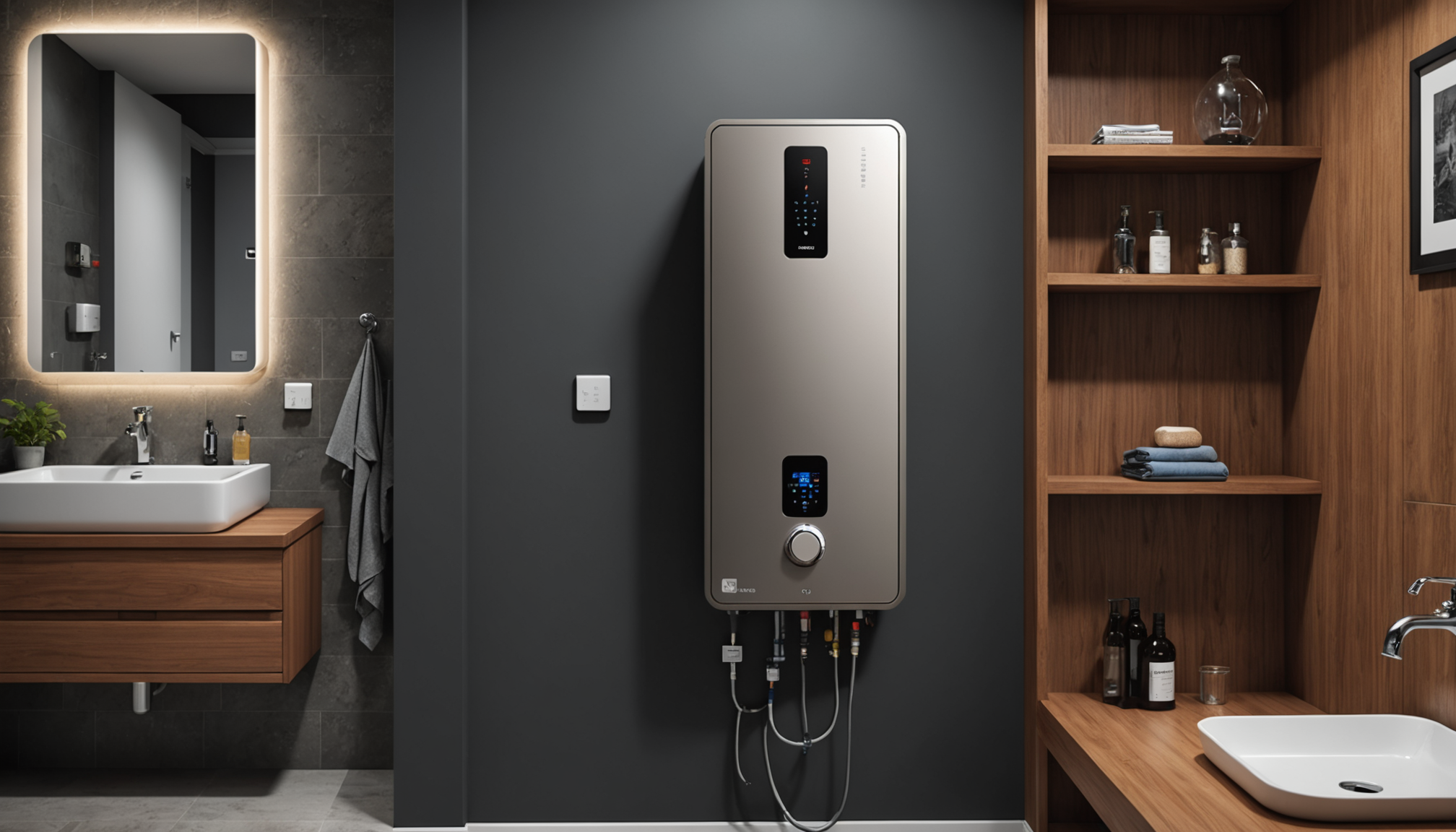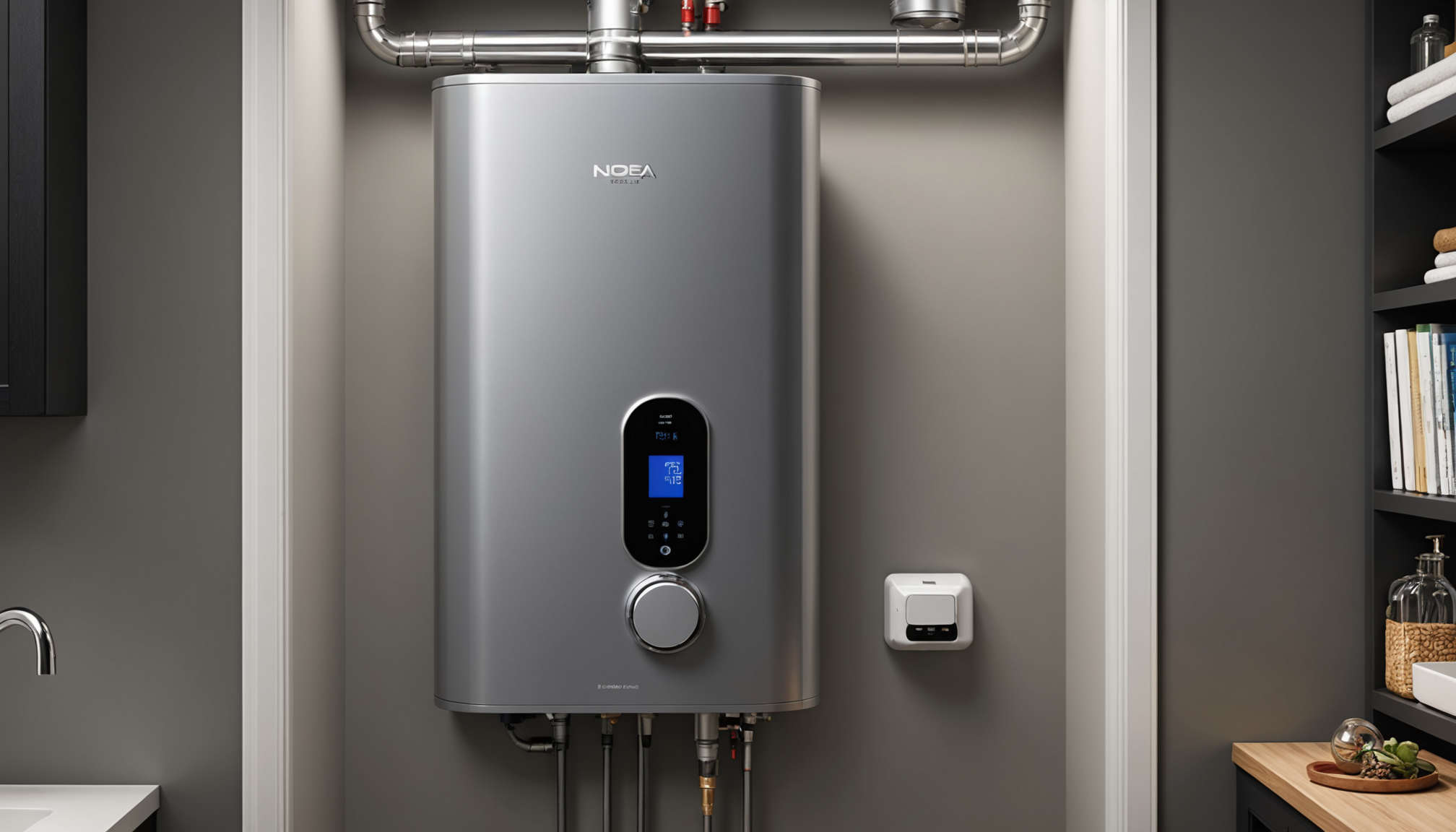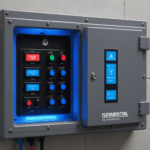When selecting a water heater, homeowners are often faced with the choice between tankless and traditional models. Understanding the critical differences between these types can help make a more informed decision. This comparison will explore the foundational characteristics, installation flexibility, and fundamental functionality of each option, lending insight into which might better suit particular needs.
Traditional water heaters, commonly known as tank or storage water heaters, are the more conventional option. They consist of an insulated tank that holds a reserve of hot water—usually between 30 to 50 gallons—ready for use. These heaters maintain the set temperature, which means the heating element operates periodically to keep the water warm throughout the day. This design is straightforward and familiar to most consumers, having been the prevalent choice for decades.
In contrast, tankless water heaters, often referred to as on-demand or instantaneous heaters, sidestep the need for a large storage tank. Instead of storing hot water, these units heat water directly as it flows through the device. This instantaneous process allows for a continuous supply of hot water, providing energy savings because the heater only operates when there is a demand for water rather than maintaining a constant hot water supply. The compact design also means that these can be installed in smaller spaces, adding to their appeal for homes with limited room.
Let’s delve deeper into the plumbing comparisons and operational capabilities of both types:
| Feature | Traditional Water Heater | Tankless Water Heater |
| Heating Method | Stores and maintains a reserve of hot water | Heats water on demand |
| Storage Requirement | Requires a large tank, often 30-50 gallons | No tank required, minimal space needed |
| Energy Usage | May lead to energy loss due to standby heat | Offers energy savings by heating only when needed |
| Initial Cost | Generally lower upfront cost | Higher initial investment |
| Water Supply | Limited by tank size; risk of running out during peak use | Unlimited hot water supply (flow rate considerations apply) |
Both systems come with their sets of advantages and trade-offs related to installation locations, operation costs, and compatibility with existing plumbing infrastructures. Traditional heaters may better suit households with consistent, high-volume water usage patterns, while tankless solutions cater to those prioritizing energy efficiency and space conservation. Understanding these plumbing comparisons aids in choosing the right model individual needs and sustainability goals.
Advantages of tankless water heaters
Tankless water heaters are gaining popularity among homeowners due to their notable advantages, especially for those prioritizing efficiency and space conservation. Here’s why tankless heaters might be the right choice for your home:
1. Energy Savings: Tankless water heaters are known for their impressive energy efficiency. Since they only operate when hot water is needed, they avoid the standby energy losses associated with traditional heaters, which continuously heat a storage tank full of water even when it’s not in use. According to the U.S. Department of Energy, tankless heaters can be 24% to 34% more energy-efficient for homes that use less than 41 gallons of hot water daily. This efficiency rises if the demand for hot water is lower, offering substantial energy savings over time.
2. On-Demand Hot Water: Unlike traditional heaters with a limited hot water reserve, tankless models provide a virtually endless supply of hot water. This is particularly beneficial for large families or homes with high hot water consumption during peak hours. With the instantaneous heating mechanism, homeowners don’t need to worry about running out of hot water when others are simultaneously using the shower, dishwasher, or washing machine.
3. Space Efficiency: One of the standout features of tankless water heaters is their compact size. They are considerably smaller than traditional tank models, which often require substantial floor space for the tank. A tankless unit can be wall-mounted, freeing up valuable floor space for storage or other uses. This makes them an excellent choice for homes with limited space or those looking to maximize utility room efficiency.
4. Longer Lifespan: Tankless water heaters typically boast a longer lifespan than traditional models. While a conventional water heater may last 10 to 15 years, a tankless unit can operate efficiently for over 20 years with proper maintenance. This durability translates to fewer replacements over time, potentially offsetting the higher initial cost with long-term savings.
5. Reduced Risk of Water Damage: With no large storage tank that can leak, tankless heaters reduce the risk of water damage. Traditional tanks can sometimes develop leaks due to corrosion or faults in the tank itself, leading to costly repairs and water wastage. By eliminating the need for a tank, on-demand systems inherently lower this risk.
6. Environmentally Friendly: Given their efficient operation and reduced energy consumption, tankless water heaters have a lower environmental impact compared to traditional counterparts. By using less energy, they contribute to reducing the overall carbon footprint of a household, aligning with sustainability goals and the increasing push for greener appliance choices.
While the initial cost and installation complexity of tankless systems can be higher than traditional water heaters, their numerous advantages offer compelling benefits for those seeking long-term efficiency and reliability. The choice boils down to the specific needs of your household, including water usage patterns, available space, and energy-saving priorities.
Benefits of traditional water heaters
Traditional water heaters have long been a mainstay in many homes, and their popularity is underpinned by several significant benefits that cater to a variety of household needs. Understanding these advantages can help homeowners decide if this familiar choice aligns with their requirements.
One of the primary benefits of traditional water heaters is their consistent and reliable hot water supply. Unlike their tankless counterparts, traditional heaters store a substantial volume of hot water—typically ranging from 30 to 50 gallons. This stored reserve ensures that hot water is readily available, which can be crucial during high-demand periods, such as mornings or evenings when multiple household members may need to shower or run appliances simultaneously. Having a reservoir means there’s a buffer to keep up with demand during times of peak usage, minimizing disruptions.
Another notable advantage is the lower initial purchase and installation cost. Traditional water heaters generally have a more affordable upfront price compared to tankless models. Their installation process is straightforward and tends to be less labor-intensive, especially if a home is already set up with the necessary plumbing for a tank system. For many homeowners, this lower initial financial outlay is a compelling reason to opt for a traditional heater, as it makes them a more accessible option for those on a budget.
Traditional water heaters also score points in terms of simplicity and ease of replacement. Given their widespread use, most plumbers are well-acquainted with their installation, repair, and maintenance, thereby offering a broader choice of service providers. This familiarity can lead to quicker repair times and the availability of replacement parts, ensuring that any issues can be resolved efficiently with minimal hassle. Homeowners often find comfort in the straightforward nature of these systems, reducing the complexity of their hot water solutions.
When it comes to compatibility with existing home systems, traditional water heaters integrate seamlessly. Many homes, particularly older ones, were designed with traditional water heaters in mind. This innate compatibility often means there’s no need for significant retrofitting or modifications to a home’s plumbing setup, thereby avoiding additional installation expenses and complexities.
Furthermore, traditional water heaters often come with proven durability and straightforward maintenance requirements. When properly maintained, these water heaters can last between 10 to 15 years, providing reliable service throughout their lifespan. Routine care, such as flushing the tank to prevent sediment build-up and checking the temperature and pressure relief valves, is usually sufficient to keep them operating optimally.
Finally, for those concerned about initial energy costs, traditional heaters that incorporate modern insulation techniques can help mitigate some standby energy losses. They stay hot for longer periods and require less frequent heating cycles, offering a balance between affordability and energy efficiency.
In summary, traditional water heaters present a blend of reliability, affordability, and ease of use that continues to make them a preferred choice for many households. While tankless heaters offer notable energy savings and efficiency gains, the enduring benefits of traditional models retain their appeal for those valuing consistent hot water availability and lower upfront costs.
Cost considerations for installation and maintenance
When choosing between tankless heaters and traditional water heaters, understanding the cost implications for installation and maintenance is crucial. Upfront costs and long-term expenditures can significantly impact which option is more economical for your household.
Tankless heaters generally require a higher initial investment compared to traditional water heaters. This is primarily because tankless systems involve more complex technology and often need upgraded plumbing and electrical setups. Installation costs can also be higher if the home requires significant adjustments to accommodate the tankless system’s demands, such as ensuring adequate ventilation or upgrading the gas line to handle increased flow rates. Despite the initial expense, tankless models offer energy savings that could offset these costs over time, especially in homes with lower hot water demand. Their on-demand functionality means they only consume energy when hot water is needed, eliminating standby heat losses that are common with traditional tanks. This efficiency could result in lower utility bills, providing financial relief as the years go by.
In contrast, traditional water heaters typically present a lower barrier in terms of initial cost. Installation is often more straightforward, as many homes are already configured to accommodate a tank system, minimizing additional plumbing or electrical expenses. The upfront cost savings make traditional models an attractive choice for those on a tighter budget or for rental properties where long-term investment in energy savings may not be as critical. However, it’s important to note that traditional heaters can incur higher ongoing energy costs due to the continuous heating required to maintain the stored water temperature. This can lead to increased utility bills over the lifespan of the water heater.
Maintenance costs are another consideration. Tankless water heaters, while generally known for their longer lifespan—often exceeding 20 years with proper care—require regular maintenance to ensure they remain efficient. This might include periodic descaling to prevent mineral buildup, which can affect performance, especially in areas with hard water. Traditional water heaters, although having a shorter average lifespan of 10 to 15 years, also require maintenance such as flushing the tank to prevent sediment buildup and inspecting the anode rod regularly to stave off corrosion.
In terms of replacement costs, tankless heaters may offer long-term savings due to their extended lifespan and fewer needs for replacement. However, when a replacement is eventually required, the cost may still be significant due to the higher cost of the units themselves and potential updates needed to ensure compatibility with newer models. Traditional heaters, by comparison, are less expensive to replace unit-wise, but may need replacing more frequently due to their shorter operational life.
Ultimately, whether you prioritize the lower initial cost of a traditional heater or the potential for long-term energy savings and reduced maintenance frequency of a tankless system depends on your unique circumstances, including your financial plan and your household’s hot water usage patterns. Understanding these cost considerations and how they align with your household needs —from installation flexibility to energy consumption patterns—can help guide you toward the most cost-effective and suitable water heating solution.
Energy efficiency and performance
When evaluating energy efficiency and overall performance, the decision between tankless and traditional water heaters brings several crucial factors to light. Each type has distinct operational dynamics that influence how they consume energy and perform in a residential setting.
Tankless water heaters, known for their on-demand hot water supply, take the lead in energy efficiency for many households. By heating water only when needed, tankless systems avoid the standby heat losses associated with traditional water heaters. This process saves energy by eliminating the need to keep a reserve of hot water continually heated, a significant plus for eco-conscious homeowners. The direct heating method inherent in tankless heaters ensures that no energy is wasted on maintaining water temperature when there is no demand. While initial costs can be higher due to installation and integration into existing plumbing systems, the potential for long-term energy savings is notable. Many tankless models are designed to adapt effectively to varying hot water demands, reducing wasteful energy spending and trimming utility expenses over time.
In contrast, traditional water heaters have steady energy demands due to their reliance on a storage tank. This tank must be maintained at a consistent temperature to ensure water is readily available, leading to potential energy inefficiencies known as standby heat loss. This is when heat escapes from the stored water, requiring the heater to cycle on periodically to reheat the cooled water, which can increase energy consumption and utility costs. However, advancements in insulation technology for traditional tanks have mitigated some of these energy losses, further balancing the energy efficiency equation. For homes with high hot water needs, these models can provide uninterrupted service, thanks to their energy reserve, though this comes at the cost of increased energy usage.
Performance also varies significantly between the two types. The on-demand capabilities of tankless water heaters mean that they excel in providing an unending supply of hot water, making them ideal for large households or those with cyclical hot water needs like multiple showers occurring at once. This adaptability stems from their ability to heat water instantly, which is not limited by a set storage capacity—unlike traditional models. However, their performance can be compromised by simultaneous high-flow demands, only handling a certain number of fixtures at once without impacting water flow.
Traditional heaters, with their dedicated tank storage, perform effectively in settings where there’s regular and predictable hot water usage. Their ability to provide a stable volume of water is reliable, yet when the total supply is depleted, recovery time to heat the subsequent batch can be time-consuming, impacting service during periods of sustained high demand.
Overall, both tankless and traditional water heaters present unique strengths and limitations regarding energy efficiency and performance. Homeowners must weigh these factors against their specific needs, including water usage habits and energy-saving priorities, to decide which system align best with their lifestyle. A thorough consideration of these elements will aid in selecting a water heating solution that offers both comfort and cost-effectiveness for the years to come.
In conclusion, the choice between tankless and traditional water heaters ultimately depends on your household’s hot water usage patterns, available space, and budgetary constraints. Tankless systems offer substantial long-term energy savings and an endless hot water supply, ideal for eco-conscious homeowners or those with varying water needs. Meanwhile, traditional heaters provide an immediate and reliable hot water reserve, often at a lower initial cost, making them a practical choice for homes with steady water demands. By weighing the advantages and costs associated with each type, you can determine which solution will most effectively meet your household’s requirements.











